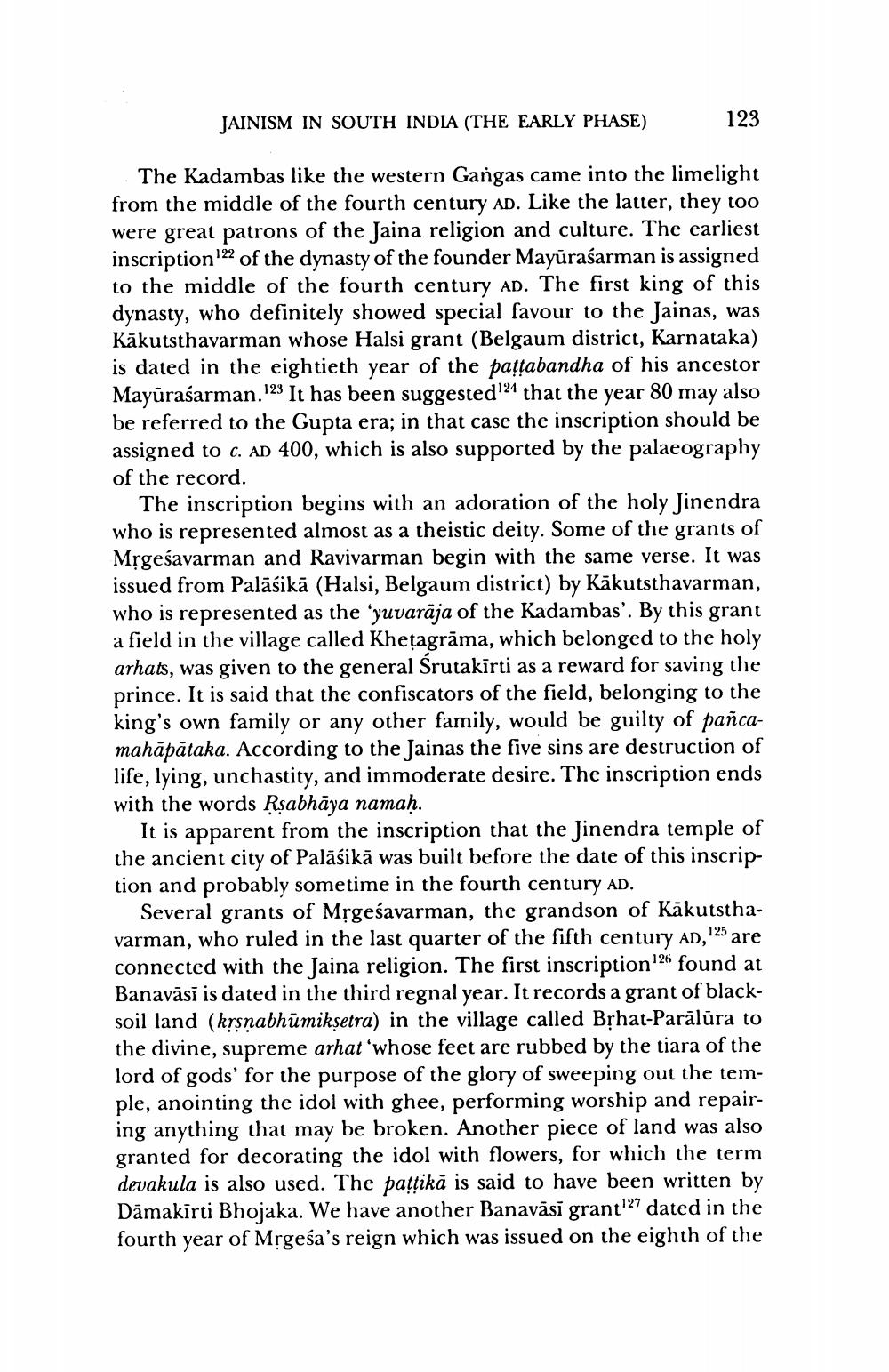________________
JAINISM IN SOUTH INDIA (THE EARLY PHASE)
123
The Kadambas like the western Gangas came into the limelight from the middle of the fourth century AD. Like the latter, they too were great patrons of the Jaina religion and culture. The earliest inscription"22 of the dynasty of the founder Mayūraśarman is assigned to the middle of the fourth century ad. The first king of this dynasty, who definitely showed special favour to the Jainas, was Kākutsthavarman whose Halsi grant (Belgaum district, Karnataka) is dated in the eightieth year of the pattabandha of his ancestor Mayūraśarman.123 It has been suggested 24 that the year 80 may also be referred to the Gupta era; in that case the inscription should be assigned to c. AD 400, which is also supported by the palaeography of the record.
The inscription begins with an adoration of the holy Jinendra who is represented almost as a theistic deity. Some of the grants of Mrgeśavarman and Ravivarman begin with the same verse. It was issued from Palāśikā (Halsi, Belgaum district) by Kākutsthavarman, who is represented as the 'yuvarāja of the Kadambas'. By this grant a field in the village called Khețagrāma, which belonged to the holy arhats, was given to the general Śrutakirti as a reward for saving the prince. It is said that the confiscators of the field, belonging to the king's own family or any other family, would be guilty of pañcamahāpātaka. According to the Jainas the five sins are destruction of life, lying, unchastity, and immoderate desire. The inscription ends with the words Rşabhāya namaḥ.
It is apparent from the inscription that the Jinendra temple of the ancient city of Palāśikā was built before the date of this inscription and probably sometime in the fourth century AD.
Several grants of Mrgesavarman, the grandson of Kākutsthavarman, who ruled in the last quarter of the fifth century AD, 125 are connected with the Jaina religion. The first inscription"26 found at Banavāsi is dated in the third regnal year. It records a grant of blacksoil land (krsnabhūmiksetra) in the village called Bệhat-Parālūra to the divine, supreme arhat 'whose feet are rubbed by the tiara of the lord of gods' for the purpose of the glory of sweeping out the temple, anointing the idol with ghee, performing worship and repairing anything that may be broken. Another piece of land was also granted for decorating the idol with flowers, for which the term devakula is also used. The pattikā is said to have been written by Dāmakirti Bhojaka. We have another Banavāsī grant!27 dated in the fourth year of Mrgeśa's reign which was issued on the eighth of the




